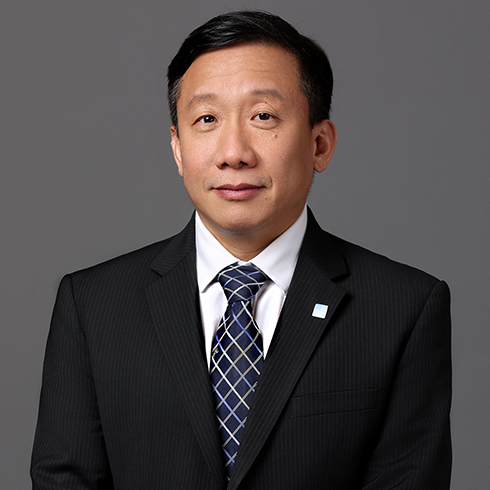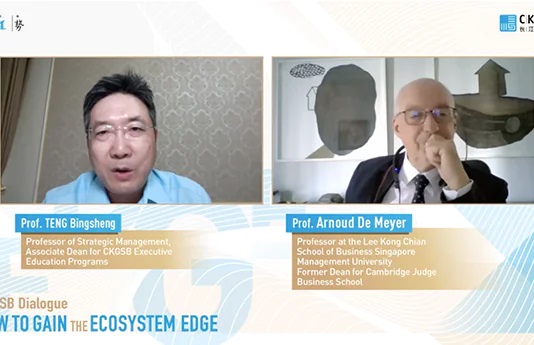The Lui Che Woo family, who owns some of Macau’s largest and most influential hotels and casinos, managed to seamlessly transition its business leadership and wealth, despite multiple heirs and a vast business empire. Their core principle: “division of labor without division of the family,” serves as a model for family business succession. This strategy maintains unified ownership while assigning responsibilities based on each member’s strengths and interests, fostering strong governance, collaboration, and sustained growth.
I. Seamless Succession by the Lui Family
Lui Che Woo, Macau’s second-generation “casino king,” had a remarkable journey. He began by selling snacks, pivoted to construction equipment during Hong Kong’s infrastructure boom, and later expanded into mining and real estate. In 2002, he seized the opportunity presented by Macau’s casino license liberalization, founding Galaxy Entertainment Group. By 2016, he had become the city’s leading casino magnate. He passed away in December 2024.
Lui and his wife raised five children: three sons (Lui Yiu Tung, Lui Yiu Nam, and Lui Yiu Wah) and two daughters (Tang Lui Wai Yu and Lui Wai Ling). In addition to the publicly listed K. Wah International Holdings and Galaxy Entertainment Group, the family oversees hotel chains and building materials companies—such as the Stanford Hotels Group and K. Wah Construction Materials—most either privately held or wholly owned subsidiaries.
At the time of asset distribution, all five children were given clearly defined roles across three dimensions:
- Ownership (O) – equity stakes
- Control (C) – voting power and decision-making rights
- Management (M) – day-to-day operational leadership
As early as 2012, Lui publicly shared his succession plan:
- Lui Yiu Tung (eldest son): Macau businesses
- Lui Yiu Nam (second son): United States businesses
- Lui Yiu Wah (youngest son): Hong Kong businesses
- Tang Lui Wai Yu (eldest daughter): hotel operations
- Lui Wai Ling (youngest daughter): corporate administration
In terms of formal positions, Lui Yiu Tung, Lui Yiu Wah, and Tang Lui Wai Yu held executive roles across both public companies, reinforcing cross-functional governance.
To preserve the family’s control, ownership of both K. Wah International and Galaxy Entertainment was concentrated through a family trust and holding companies.
Breakdown of Ownership-Control-Management of K. Wah International Before Lui Che Woo’s Passing:
- Ownership (O): 66.8% held by the family, including:
- Lui Che Woo: 25.19%
- Lui Yiu Tung: 13.66%
- Lui Yiu Wah: 13.83%
- Tang Lui Wai Yu: 14.13%
- Control (C): Equal to ownership—66.8%
- Management (M):
- Lui Che Woo: Chairman & Managing Director
- Lui Yiu Tung, Lui Yiu Wah, Tang Lui Wai Yu: Executive Directors
After Lui Che Woo’s Death (as reported in the 2025 Annual Report):
- Ownership (O): 61.47% held by the family, including:
- Lui Yiu Tung: 18.05%
- Lui Yiu Wah: 18.30%
- Tang Lui Wai Yu: 18.58%
- Lui Che Woo Foundation: 6.54% (managed by Lui Yiu Tung)
- Management (M):
- Lui Yiu Tung: Chairman
- Lui Yiu Wah & Tang Lui Wai Yu: Co-Managing Directors
Galaxy Entertainment Group:
Ownership (O): Before his death, the family held 57.36%, including:
- Lui Che Woo: 51.09%
- Lui Yiu Tung: 2.80%
- Lui Yiu Wah: 1.57%
- Tang Lui Wai Yu: 1.90%
After succession:
Ownership (O):
- Lui Yiu Tung: 30.88%
- Tang Lui Wai Yu: 19.22%
- Lui Che Woo Foundation: 6.75%
Management (M):
- Chairman: Lui Yiu Tung
- Executive Directors: Lui Yiu Tung, Tang Lui Wai Yu, and Lui Wai Ling (who oversees HR and administration)
What’s most remarkable is that all of these transitions occurred without public drama, internal disputes, or legal conflict—a stark contrast to the contentious succession of Stanley Ho, Macau’s other “Casino King.”
II. The Meaning of “Division of Labor Without Division of the Family”
Why was the Lui family able to achieve such a smooth transition of leadership and wealth—despite having multiple heirs and a complex business portfolio? The key lies in their principle of “division of labor without division of the family.” This model rests on three foundational pillars:
1. Unified Ownership Structure
The foundation of any successful family succession is ensuring that both ownership (O) and control (C) remain firmly within the family.
When control is diluted or dominated by external shareholders, internal coordination becomes difficult. In the Lui family’s case, majority ownership of both K. Wah International and Galaxy Entertainment was consolidated through family trusts and holding companies. Their other businesses were not listed and remained under full family control, allowing decisions to reflect internal consensus rather than external pressures.
Similar structures can be found in other wealthy Asian families. For example, Thai tycoon Wong Chue Meng (or Mongkol Kanjanapas)’s family holds more than 50% of their main businesses, with each son overseeing a distinct sector—watches, bird’s nests, and real estate.
2. Clearly Defined Roles
In large-scale modern enterprises, executive leadership demands more than just ownership—it requires ability, judgment, and long-term commitment. As markets evolve and industries transform, succession strategies must align with the specific skills and interests of heirs.
Lui Che Woo did exactly that. He matched each child’s role with their academic background, professional interests, and individual strengths, allowing them to assume leadership positions they were prepared for.
- Lui Yiu Tung (UC Berkeley, Civil Engineering & Structural Engineering): Returned to Hong Kong post-graduation to support K. Wah’s real estate development. He played a major role in building the Cotai resort complex in Macau—naturally positioning him to oversee Macau operations of gaming and entertainment.
- Lui Yiu Nam: Assigned to the U.S. in the 1980s to grow the family’s hotel business there. He was also instrumental in assisting the family’s bid for a Macau gaming license.
- Lui Yiu Wah (University of Southern California, Industrial & Systems Engineering): Took charge of construction and materials operations in Hong Kong.
- Tang Lui Wai Yu (McGill University, Business): Entrusted with the family’s hotel and hospitality operations.
- Lui Wai Ling: Focused on the internal administrative affairs of Galaxy Entertainment.
Even after Lui Che Woo’s passing, the second generation largely adhered to this division of roles. For instance:
- Lui Yiu Tung succeeded his father as Chairman of both listed companies.
- Tang Lui Wai Yu and Lui Yiu Wah jointly serve as Co-Managing Directors of K. Wah International.
- Lui Yiu Nam continues to oversee hotel operations in the U.S.
- Lui Wai Ling now supervises HR and administration for Galaxy Entertainment.
3. Strong Family Cohesion
At its core, the “division without separation” model depends on more than structures or roles—it relies on deep-rooted family cohesion.
Even with centralized ownership and rational division of responsibilities, conflicts may arise if siblings drift apart in values or vision. Sustaining unity takes decades of intentional cultivation. The seeds must be planted early—during childhood.
All five children in the Lui family were involved in business-related activities from a young age—visiting quarries, observing their father’s work ethic, and developing a strong sense of responsibility. These experiences influenced their academic and professional paths.
But cohesion is not built on sentiment alone. It must be anchored in shared values—and altruism plays a key role.
Lui Che Woo was deeply committed to philanthropy. Since the 1980s, he had been donating to education, funding the construction of 122 “Hope Schools.” In 2015, he launched the Lui Che Woo Prize to recognize contributions to sustainable development and human welfare.
His family has continued this legacy:
- The family has sponsored Macau’s Youth National Knowledge Contest for six consecutive years.
- Galaxy Entertainment plans to launch a special fund aimed at cultivating patriotism and civic values among young people.
These actions help elevate the family’s standing and strengthen the next generation’s identification with the family’s mission—not just its wealth.
Other families cultivate cohesion through cultural tradition. In southern Chinese communities such as Fujian and Chaozhou, family ancestral halls are used to pass down history, values, and collective pride—building emotional unity across generations.
III. Key Challenges in the “Division Without Separation” Model
The Lui family’s experience highlights the value of this model—but applying it successfully requires careful attention to structure, clarity, and adaptability.
1. Equity Distribution vs. Power Balance
A fair equity arrangement is critical—but fair doesn’t always mean equal. Dividing shares evenly among heirs may create gridlock if only one is fit to lead. The goal is balanced influence and clear decision-making—not strict equality.
A cautionary tale comes from Zhejiang’s Far East Leather Company, once a leading player in China’s leather industry. Founder Wang Datong originally fostered strong unity among his family. By 2009, the company had reached billions in annual revenue.
Wang gave 30% of shares to his eldest son (the primary manager), 20% each to three other children, and 10% to his wife. Though each had a defined role, tension between siblings—especially over control—led to a collapse in trust and the company’s downfall.
The lesson is that even when heirs are groomed, not all will be ideal leaders at all times. Families should allow flexible equity transfers so capable leaders retain authority.
One common solution is setting up family trusts early on, which separate ownership from control. Trusts can adjust shareholding behind the scenes, minimizing disruption.
For example, when Longfor Properties founders Wu Yajun and Cai Kui divorced, each placed their shares in separate trusts. When their daughter inherited the business, the transfer occurred smoothly through trust amendments—avoiding governance instability.
2. Avoiding Overlap in Family Roles
Clarity in responsibilities is vital. The Lui family divided roles by geography and business line, but families in a single business must take extra care to:
- Maximize each heir’s autonomy
- Avoid authority overlap
- Clarify responsibilities in key areas (finance, strategy, growth)
Without this, businesses risk infighting and inefficiency. A well-crafted family charter or formal job descriptions can reduce ambiguity and conflict.
Some heirs are redefining their roles. For instance, becoming brand ambassadors or influencers—not core executives—can still build brand equity and connect with modern audiences. These roles reflect generational change while maintaining cohesion.
3. Balancing Tradition with Innovation
Another challenge is working effectively with non-family professionals and embracing change.
Smooth collaboration requires:
- Early involvement in the business
- Deep understanding of internal dynamics
- Trust-building with veteran staff
However, tradition shouldn’t stifle progress. Heirs must adapt to:
- Market shifts
- New technologies
- Emerging business models
They must be willing to evolve strategy and invest in innovation so the family legacy remains competitive.
IV. How Single-Child Families Can Apply the “Division Without Separation” Model
Although this model often appears in large families, it’s just as relevant to single-child households, which are common in China. With smart design, the same principles apply—especially in two areas:
1. Rethinking Ownership and Control
Traditionally, an only child inherits full ownership. But this can be risky if the heir is inexperienced.
A case in point occurred when Haixin Group’s founder Li Haicang died unexpectedly and his son Li Zhaohui inherited 54% of the company, becoming chairman. Lacking business experience, he was suddenly responsible for 10,000 employees and 4 billion RMB in assets. Tensions with relatives and overwhelming pressure led to the company’s decline.
A better alternative would be placing shares in a trust or holding company, with the heir as beneficiary. This allows professionals or experienced family members to manage operations while the heir matures—preserving both stability and unity.
2. Embracing Non-Family Talent
Even when a sole heir holds ownership, they don’t need to do everything. Success depends on building a strong team of:
- Non-family shareholders
- Professional managers
- Veteran executives
Succession plans should integrate these people meaningfully—via equity incentives, board seats, or decision-making roles. This approach honors the “division without separation” model by focusing the heir on stewardship and strategy, while others handle operational responsibilities.
V. Conclusion
The Lui family offers a powerful example of how to pass on both wealth and leadership without conflict. Their approach—anchored in clear ownership, defined roles, and shared values—ensures family unity and business continuity.
Whether in a multi-heir dynasty or a single-heir household, the principle of “division of labor without division of the family” offers a framework for family enterprises to thrive—not just for decades, but for generations.
This article was originally published in Chinese in the Economic Observer.






















